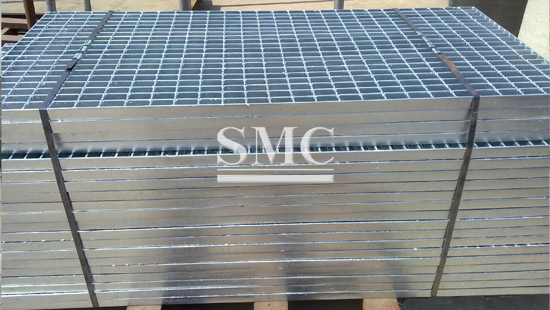Notice: Undefined index: sith_hide_share in /www/sites/alloy.wiki/index/wp-content/themes/likegoogle/single.php on line 32
Deprecated: get_settings is deprecated since version 2.1.0! Use get_option() instead. in /www/sites/alloy.wiki/index/wp-includes/functions.php on line 4862
The surface of the hot-dip galvanized steel grating is treated with special hot-dip galvanizing. Its chemical and physical properties are stable, and it is not easy to be corroded and oxidized by air and microorganisms. It can significantly enhance the load capacity of the trench and prevent collapse. The grid has a large impact resistance and has a large span. Because the hot-dip galvanized steel grid has strong impact resistance, strong corrosion resistance and heavy load capacity, it is elegant and beautiful. It is used on municipal roadbeds and steel platforms. The construction project has excellent performance and high cost performance, so that the hot-dip galvanized steel grating is widely used in the construction of new and old roadbeds to cover the water channel road. If there is no human destruction factor involved, the hot-dip galvanized steel grating is a very good Steel frame structure and load-bearing platform.
Then how to distinguish between hot-dip galvanized steel grating and cold-dip galvanized steel grating?

1. The appearance color of the steel grid plate, the color of the hot-dip galvanized steel grid plate is brighter than that of the cold-galvanized steel grid plate, more atmospheric, silvery white, and the cold-galvanized steel grid plate is dim, dirty white, cold Galvanized steel gratings have high requirements on the cleanliness of the workpiece surface, so the technical level of operators is also high, and the working conditions of hot-dip galvanizing are poor, and they need to work at high temperatures. The general temperature is 450℃-460℃, but this kind of The process is simpler than cold galvanized steel grating, hot galvanized steel grating is better than cold galvanized steel grating overall galvanizing effect.
2. The thickness of galvanized steel grating is thin. The thickness of hot-dip galvanized steel grating is about 70um, while that of cold-galvanized steel grating is only about 10um (this is why the price of hot-dip galvanized steel is higher than that of cold-dip galvanized) Hot-dip galvanized steel gratings are used to melt zinc ingots at high temperatures. Add auxiliary materials and then immerse the steel grid plate in the zinc tank to attach a layer of zinc to the surface, and the cold-galvanized steel grid plate adopts a physical reaction, without heating, the amount of zinc is less, and it is very easy to encounter a humid environment Shedding generates subsequent costs.
3. The economic benefits of steel gratings, the complex electro-galvanizing process, increased investment in equipment and infrastructure, as well as large power consumption and serious pollution. The hot-dip galvanizing process is simple, the investment in equipment and infrastructure is relatively reduced, and the output is large. However, the “zinc consumption” of electro-galvanized zinc is the amount of zinc deposited on the surface of the workpiece, and a large amount of zinc in hot-dip galvanizing is oxidized on the surface of the zinc liquid. The formation of zinc ash and zinc slag caused by the “erosion” of zinc pots, workpieces, spreaders, etc., and the unevenness of the hot-dip galvanized layer will also increase the zinc consumption. The cost is higher than the cold-galvanized steel grating, so the price will be higher.
Guest contributors are welcome at the Alloy Wiki.It is a weekly wiki and guide on alloy information and processing technology, while also about the vast array of opportunities that are present in manufacturing. Our team of writers consists of a Machining Material Supplier / Machinist / Tool and Die Maker, a Biomedical Engineer / Product Development Engineer, a Job Development Coordinator / Adjunct Professor, and a President and CEO of a manufacturing facility.
Link to this article:How to Distinguish Between Hot Dip Galvanized Steel Grating and Cold Galvanized Steel Grating
Reprint Statement: If there are no special instructions, all articles on this site are original. Please indicate the source for reprinting:Alloy Wiki,thanks!^^


